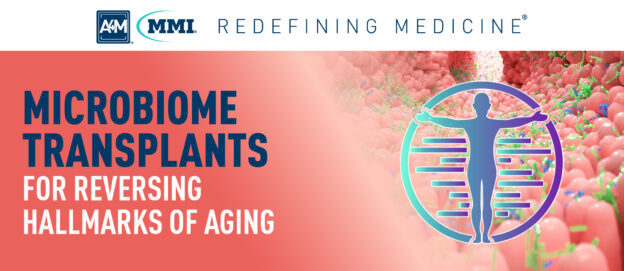In recent years, the gut microbiome has garnered significant clinical and popular attention as a critical component of overall health and wellbeing. As a burgeoning body of evidence reveals, gut health is a foundational element of whole-person wellness; imbalances and bacteria overgrowth have been directly linked to chronic diseases ranging from obesity to major depressive disorder. Most diseases are associated with changes in the types and behavior of gut bacteria, viruses, fungi, and other microbes – including aging.
The Gut, Aging, and Age-Related Disease
Changes in gut microbiome composition increase with age and adversely affect biological factors such as metabolism and immunity. This has been linked to age-related disorders, including inflammatory bowel diseases and cardiovascular, autoimmune, and neurodegenerative disorders. Previous studies have proven the relationship between alterations in microbiota composition and inflammaging, declines in tissue function, and increased susceptibility to age-related chronic disease.
The latest research aims to improve the current understanding of age-associated alterations in the gut microbiome. Scientists from the Quadram Institute in the United Kingdom explored the therapeutic potential of fecal microbiota transfers between young and aged mice.
Microbiome Transfer To Reverse Aging
As part of the trial, Quadram Institute researchers transferred the gut microbes from aged mice into healthy young mice and vice versa. They examined whether manipulating the intestinal microbiota could affect inflammatory hallmarks of aging in the gut, brain, and eye.
The fecal microbiota transplantation was conducted between young (3 months), old (18 months), and aged (24 months) mice. Researchers used whole metagenomic shotgun sequencing and metabolomics to develop a custom analysis workflow that analyzed changes in microbiota composition and metabolic potential. Finally, they evaluated the effects of age and microbiota transfer on the gut barrier, retina, and brain using protein assays, immunohistology, and behavioral testing.
Examining Age-Associated Indicators
Results of the 2022 study were published in Microbiome and revealed that microbiota composition profiles could be successfully transferred via fecal microbiome transplant – which can modulate metabolic pathway profiles. The reverse experiment of transferring aged microbiota into young mice induced inflammation in the brain and elevated proteins responsible for retinal degeneration.
Microbiota transplants from old donors led to the disintegration of the gut lining, which allowed bacterial products to cross into circulation and trigger the immune response. Furthermore, cells responsible for age-related chronic inflammations were also over-activated in recipients of aged microbiome transplants. However, in old mice, such detrimental changes could be reversed via young gut microbiota transplants.
Microbiome Modulation For Longevity?
These findings implicate that gut microbiota regulates age-related degeneration, driving detrimental changes in the gut-brain and gut-retina axes. They also open up the possibility of developing gut microbe-based therapies aimed at combatting inflammation-related tissue decline in later life and potentially reversing hallmarks of aging in the eye and brain. If these results can be replicated in humans, such therapeutics could greatly impact longevity science and the future of gastroenterological care.
Head of the Gut Microbes and Health Research Program at the Quadram Institute, Professor Simon Carding, concluded: “This ground-breaking study provides tantalizing evidence for the direct involvement of gut microbes in aging and the functional decline of brain function and vision and offers a potential solution in the form of gut microbe replacement therapy.”
Contributing to expanding the current knowledge of gut microbiome modulation and its effects, the research team continues to study fecal microbiota transplantation, the biologic pathways involved, and the particular beneficial components of young donor microbiota.

